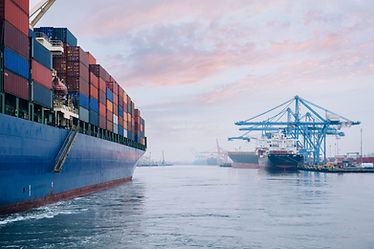How do we prepare if Narcosubmarines are the Nexus of Terrorism and Drug Trafficking?
- Mark DuPont
- Jan 12, 2018
- 3 min read

John Stryker published a great article on the Center for International Maritime Security web site that explores Narcosubmarines: The Nexus of Terrorism and Drug Trafficking?. Stryker lays out the discussion with a history of narcosubmarine development, the difficulty of their detection (and drug interdiction in general), and then the assessment of narco-terrorism, its application and its threat to national security.
I couldn't agree more with every point that John makes in this article, and echo his concern that that if we do not pay attention to this evolving threat, it will be on our doorstep.... or more accurately, in our ports.
Unfortunately, these types of discussions often fall of deaf ears. Especially, as we move further and further away from events like 9/11. It just doesn't warrant attention on the minds of many leaders. Even though the U.S. Coast Guard seized a staggering amount of drugs headed our way in 2017, more than all the other agencies combined, "that was just a drop in the bucket of what we were able to detect," said Coast Guard Rear Adm. Christopher Tomney, in a November 2017 Washington Free Beacon article. He is the director of SOUTHCOM's Joint Interagency Task Force-South, (JIATIF-South) a multi-agency, international counter drug unit based in Key West, Florida.
So how do you improve our preparedness, detection, deterrence and prevention efforts in lieu of this systemic lack of enthusiasm or attention? Especially if the threat developed by Drug Trafficking Organizations can be put to good use by terror organizations? You utilize what we have...
You just add water.

The "Just Add Water" concept is not new (good ideas rarely are), but introduced in an article I co-wrote and had published in the Spring 2014 edition of Proceedings, titled "Just Add Water: A Recipe for Border Security." To summarize, the point made in the article and one that is important here, in order to truly enhance or security posture in light of this threat, you just need to utilize the tools and capabilities you already have in place at the local, county, state and tribal levels of government. It's not about adding new boats, more people or the latest widgets, it's about coordinating and collaborating with the assets you already have out on the water.
There are three things you need to make this happen on a grand scale. You need to make sure there is true interoperability. And you accomplish this first through an integrated Coastal Surveillance System (or "CSS", a DHS S&T Project already underway and set to be piloted this year) where all the partners (not just the feds) are sharing information, data feeds, sensor detection, intel and operational plans.
Second, (and built off of the CSS framework) you turn every maritime law enforcement platform out on the water into a sensor, where the information is fed into a node at the sector or regional level, then analyzed and disseminated to the partners. Again, we are not adding any equipment to the boats out there, we are just making sure what their radar sees, what their thermal cameras see, or what their rad-nuc detection equipment sees, is all being fed into the CSS node.
And lastly, to ensure true integration and interoperability, you train all the partners on the "who, what, where and how" in order to conduct the mission in concert with the Coast Guard, Navy and CBP. This is an often forgotten part of the puzzle, but an essential piece to ensure safe and successful missions. It's part of what we call the 4 P's of Maritime Public Safety and Security, People, Platforms, Processes, and Performance and outlined in a White Paper we released last year.
Together, with these three steps, you just add water and this becomes your "wall" on our maritime borders. Regardless of the method that the adversaries attempt to penetrate our coastlines, bays, harbors, rivers and ports. That's what we are focused on at the NMLEA: Ready the Guardians, with Strength through Knowledge. We can help facilitate the building of the wall.









Comments